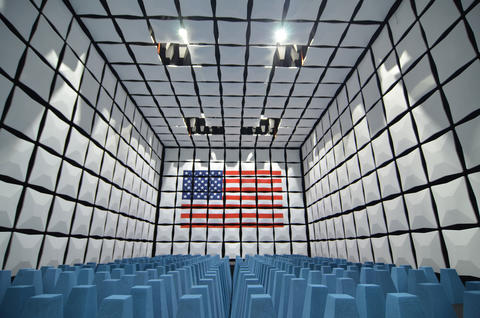NASCTN Releases Report on LTE Impact on GPS Receivers

NIST’s state-of-the-art communication anechoic chamber.
The National Advanced Spectrum and Communications Test Network (NASCTN) has completed the Impacts of LTE Signals on GPS Receivers project and has released the NASCTN report LTE Impacts on GPS along with the measurement data associated with this project.
The focus of this NASCTN project, proposed by Ligado Networks in April of 2016, was the development of a test methodology to (1) investigate the impact of Long Term Evolution (LTE) signals on Global Positioning System (GPS) devices that operate in the GPS L1 frequency band and to (2) perform radiated radio-frequency measurements on a representative set of GPS devices in order to validate the test methodology.
To better understand the potential impact of adjacent-band LTE signals on GPS receiver performance, NASCTN developed a draft test plan designed to measure how the performance of GPS receivers changed as a function of increasing LTE signal power relative to a baseline with no LTE emissions.
NASCTN testing included several measurands: carrier-to-noise density (C/N0), 3D position error, timing error, number of GPS satellites in view, time to first fix and time to first reacquisition.
The focus of this study was on GPS devices from four different receiver classes – general location and navigation (GLN), high-performance positioning (HPP), real-time kinematic (RTK), and GPS-disciplined oscillator (GPSDO).
A cross-section of regulators, Federal agencies and GPS manufacturers reviewed the NASCTN test plan and provided technical comments, which NASCTN used to prepare a revised test plan, which was released in July of 2016.
Over a three-month period, NASCTN performed the radiated measurements associated with this project at two facilities – a semi-anechoic chamber at National Technical Systems (NTS) in Longmont, CO and at a fully-anechoic chamber at the NIST Broadband Interoperability Testbed (NBIT) facility in Boulder, CO.
NASCTN relied on technical staff from NIST and the U.S. Army’s Electronic Proving Grounds to perform and validate the measurements and collect the data. The team was multi-disciplinary, including expertise in GPS devices and simulation, radiated radio-frequency measurements, timing measurements, microwave metrology, statistical analysis and data processing.
In total, NASCTN performed 1,476 hours of testing and collected over 19,000 data files for a variety of measurands that were collected from a number of GPS devices. These data were collected at a baseline condition (no LTE signals present) and over a large range of LTE signal power levels. Subsequent data processing yielded a set of 3,859 anonymized data files (780 MB) that is available along with the NASCTN report.
Due to significant interest in these measurements by regulators for assessing LTE signals on performance of GPS devices, Federal agencies, and the GPS community, NASCTN is publically releasing both the test report and the associated measurement data and may host a public meeting to give an overview of the test results and answer any questions on the testing methodology.

